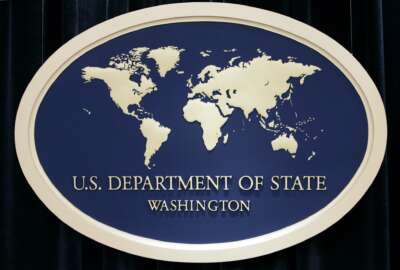Data is a hot commodity for government these days, especially when it comes to emergency services. Location data can provide first responders with detailed maps, information to train for future events and precise targeting on where a person in distress may be.
However, most of the innovations to do those tasks with data are not coming from the public sector. For that reason, the government and private sector are working closely to bring state-of-the-art technologies to EMTs, troops, firefighters and other emergency responders.
“There is an enormous amount of data out there that gets taken in, and the key is getting that processed, and the proper analysis done,” Chief of Plans, Programs and Operations Division at the National Guard Bureau Col. Paul Hessling said as part of the discussion “Zoning in on Information and Location in Government” sponsored by HERE Technologies. “While we have multiple sources that we take in data from mostly federal agency partners and the Defense Department, the key really is getting it in the right hands of the right analyst with the skillset to decipher that data and figure out what’s useful and what’s not.”
Companies like HERE Technologies are leveraging their technologies to make some of those challenges easier for agencies like the National Guard.
Pratik Desai, senior product marketing manager for global public sector at HERE Technologies, says helping government tackle issues like finding the right data for the right hands involves figuring out the pain points in the data structure.
“Once we start to hear those common themes of ‘This sounds like a timing issue. This sounds like a visibility issue. This is a data blind spot.’ Then we can go back to our stack,” Desai said. “We’re here to be trusted advisors. We’re not here to push a product. At the end of day, if you’re telling me you have a routing issue then I’m automatically thinking ‘Okay, here’s how a potential solution can be stitched together.’ It’s going to be built around what these leaders and agencies need and want. We have to customize it to what they want.”
The National Guard makes plans on disasters and a lot of data available to state and local governments, as well as the some areas of the public, to try to build an ecosystem to better respond to emergencies.
“We developed a tool called the Domestic Awareness Assessment Response Tool,” Hessling said. “It could be a county sheriff’s department in some state who could access this tool.”
Those who use it can see plans, images, video and other data that may help during a disaster. Desai said that kind of information is extremely helpful for businesses that want to work with the government. He said HERE Technologies can use that kind of data to map out future disasters so first responders can train better.
“You can literally model out a Hurricane Harvey,” Desai said. “There’s a reason that disasters can be costly and it’s because there’s a cost of inaction, there’s a cost to lethargic behavior or hesitation. All of that comes from a lack of awareness or preparedness. It’s nobody’s fault. We’re not all expected to be born knowing how to respond in a flood. But, when we get together and build a program around it, use tools that we have in the toolkit, these things are off the truck, we’re not building anything new. This is the innovations that we have in the private sector.”
Hessling said the National Guard and DoD are working on making more overtures to industry through things like small business innovation research grants and industry days.
“We’re all trying to get to the same goal of saving lives, protecting property, and utilizing whatever asset to do that,” Hessling said. “The National Guard, quite frankly, has mastered that. We’re in every community across America. It makes us really effective when we can leverage those partnerships.”
Location Data in the Public Sector
While we have multiple sources that we take in data from mostly federal agency partners and the Defense Department, the key really is getting it in the right hands of the right analyst with the skillset to decipher that data and figure out what's useful and what's not.
Col. Paul Hessling
Chief, Plans, Programs, and Operations Division, National Guard Bureau
Private Sector Partnerships
We're all trying to get to the same goal of saving lives, protecting property, and utilizing whatever asset to do that. The National Guard, quite frankly, has mastered that. We're in every community across America. It makes us really effective when we can leverage those partnerships.
Col. Paul Hessling
Chief, Plans, Programs, and Operations Division, National Guard Bureau
How Government Can Stay at the Speed of Relevance
We're here to be trusted advisors. We're not here to push a product. At the end of day, if you're telling me you have a routing issue then I'm automatically thinking ‘Okay, here's how a potential solution can be stitched together.’ It’s going to be built around what these leaders and agencies need and want. We have to customize it to what they want.
Pratik Desai
Senior Product Marketing Manager, Global Public Sector, Here Technologies
You can literally model out a Hurricane Harvey. There's a reason that disasters can be costly and it’s because there's a cost of inaction, there’s a cost to lethargic behavior or hesitation. All of that comes from a lack of awareness or preparedness. It's nobody's fault. We're not all expected to be born knowing how to respond in a flood. But, when we get together and build a program around it, use tools that we have in the toolkit, these things are off the truck, we're not building anything new. This is the innovations that we have in the private sector.
Pratik Desai
Senior Product Marketing Manager, Global Public Sector, Here Technologies
Listen to the full show:
Copyright
© 2024 Federal News Network. All rights reserved. This website is not intended for users located within the European Economic Area.









